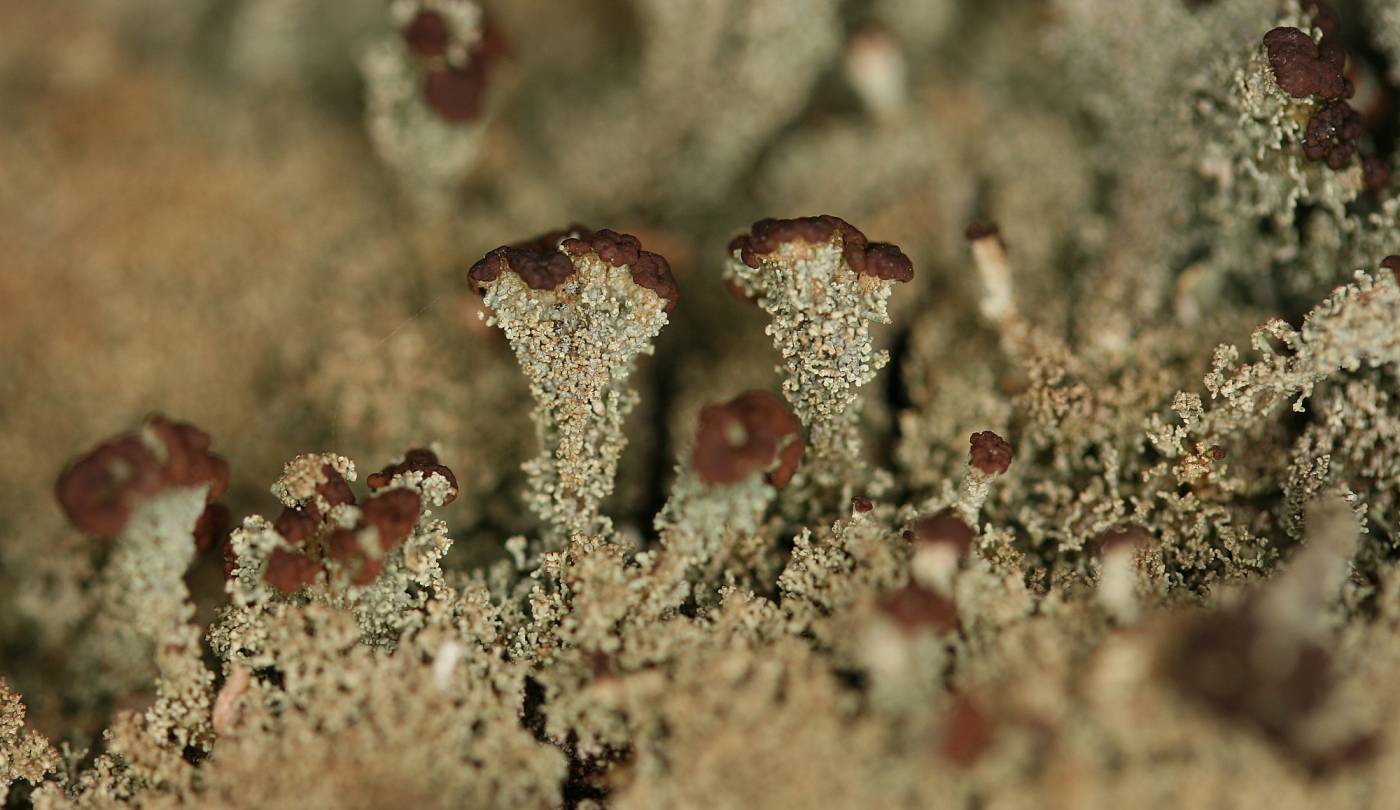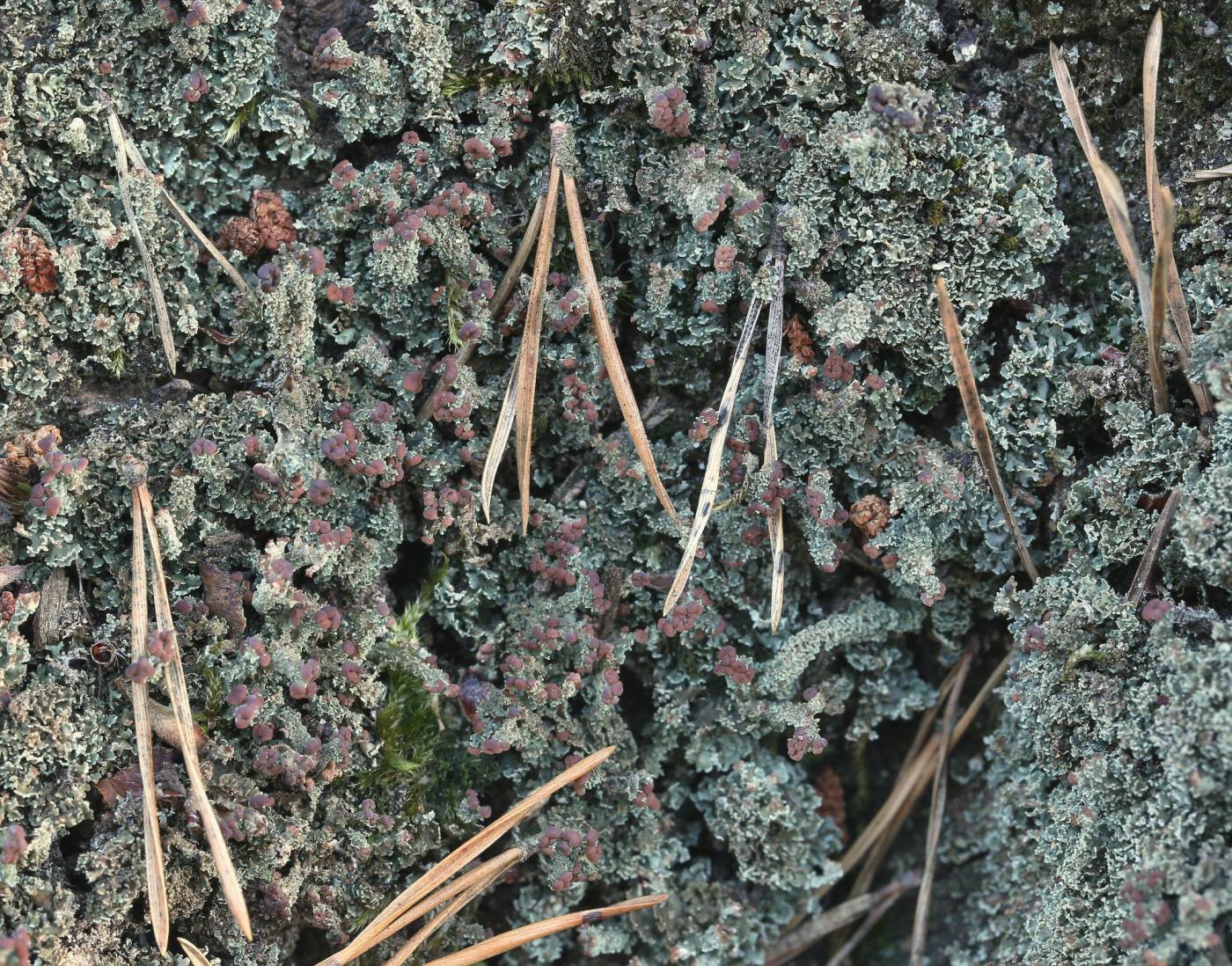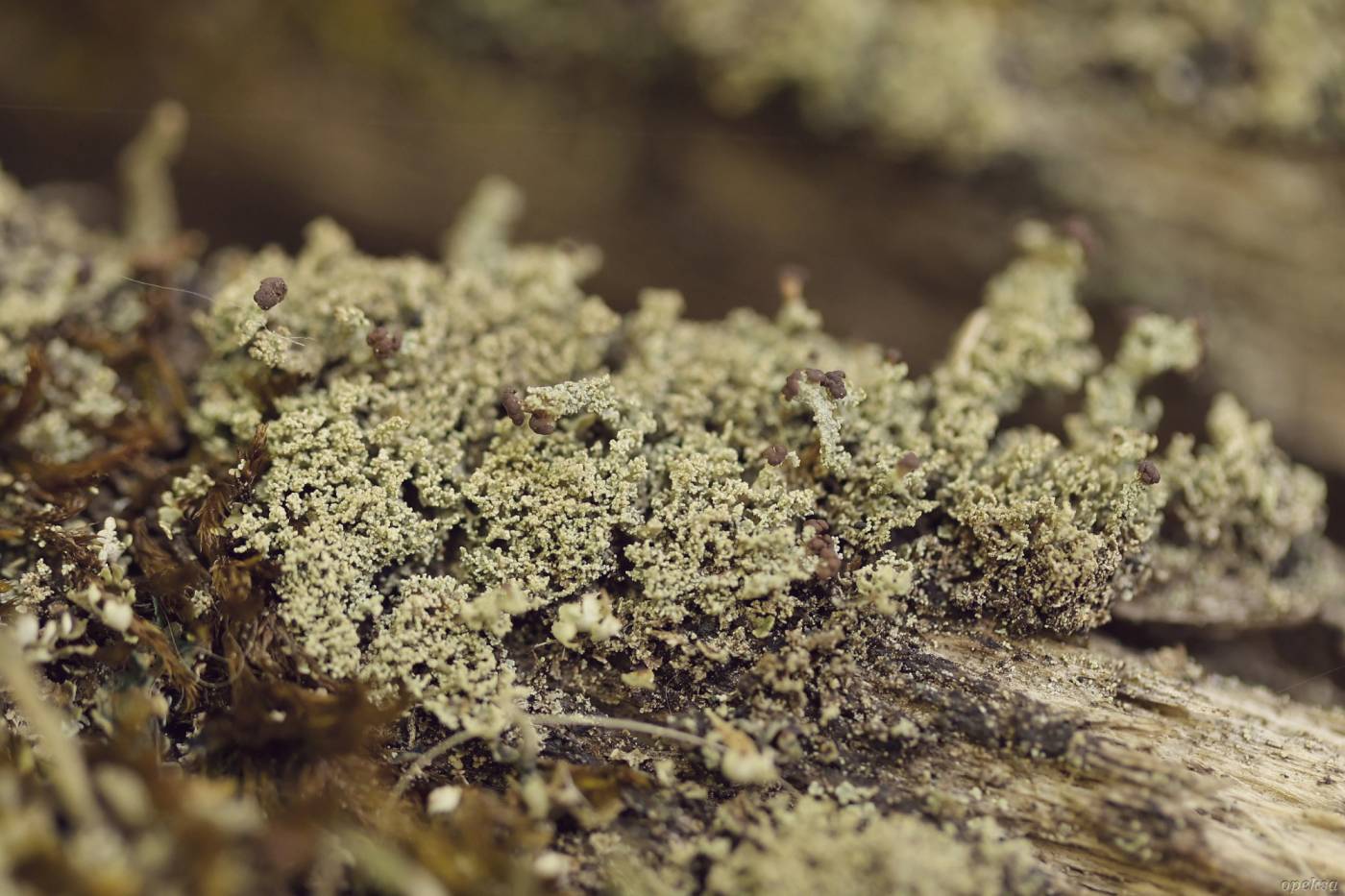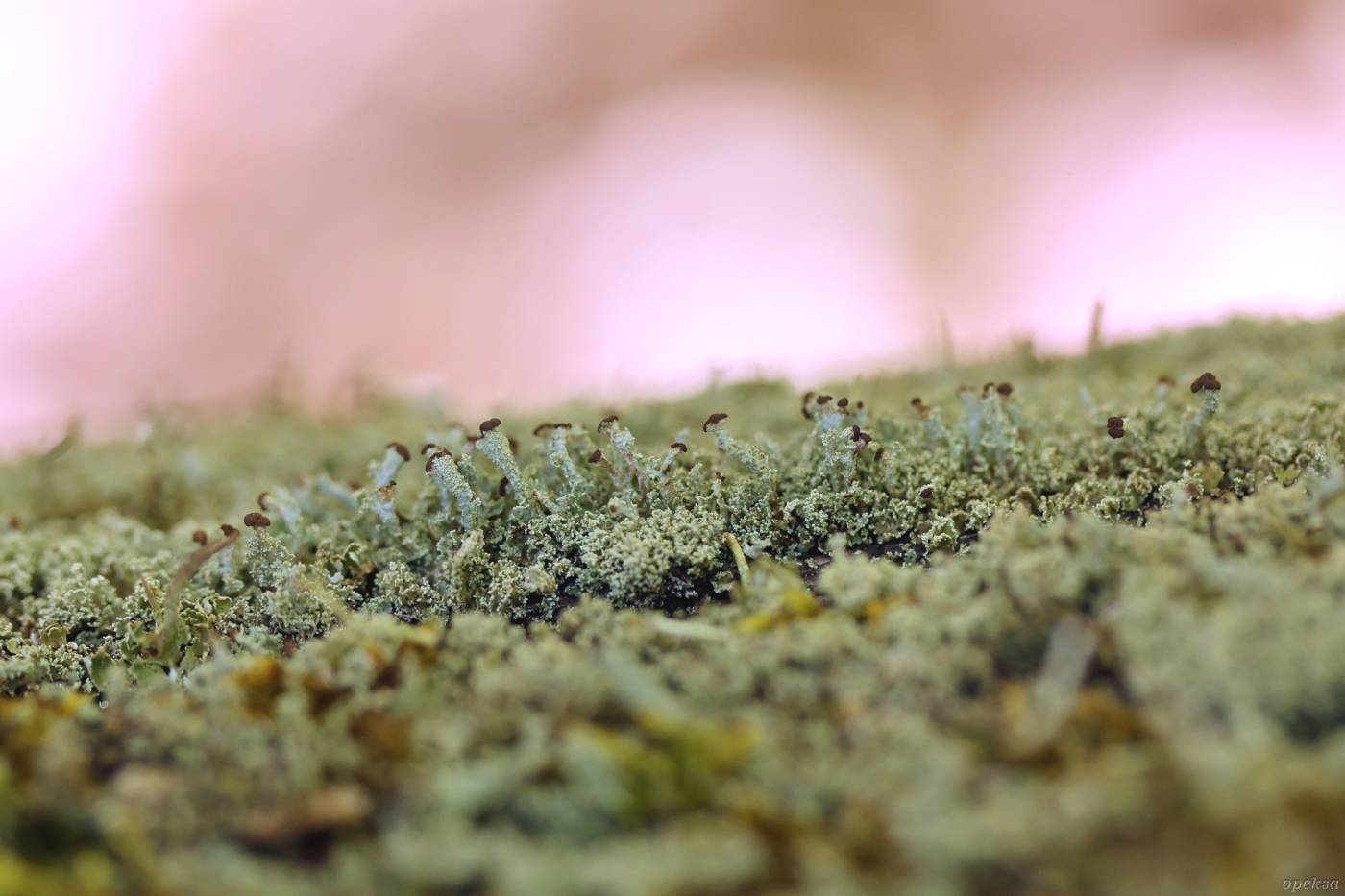A Cladonia species characterized by a well-developed primary thallus consisting of erect squamules with granular-sorediate margins and coralloid branching. Some morphotypes form only indistinct squamules and then the thallus is composed of a thick granular crust. Branched podetia with brown fruiting bodies are rarely formed.
It is a typical lignicolous species preferring oak and pine logs and stumps. Although there are only few records in the Czech Republic, it is locally common, mainly at lower elevations, e.g., in open oak forests and forest steppes in the Křivoklát region and the Podyjí National Park. The highest known occurrence is from the Vltavský luh in the Šumava Mts (Mrtvý luh, Houska) from an altitude of 730–740 m (Suza 1936, Malíček et al. 2011). In Europe, it is mainly distributed in the western and northern parts of the continent. It is quite rare in central Europe.
Literature: Suza J. (1936): Doplňky k rozšíření lišejníků v Čechách. Část III. – Časopis Národního musea 110: 107–113. Malíček J., Bouda F., Kocourková J., Palice Z. & Peksa O. (2011): Zajímavé nálezy vzácných a přehlížených dutohlávek v České republice. – Bryonora 48: 34–50.
taxonomic classification:Ascomycota → Lecanoromycetes → Lecanorales → Cladoniaceae → Cladonia
Red List (Liška & Palice 2010):EN – endangered
Red List (Malíček 2023):C3 – endangered
Occurrence in the Czech Republic
All records: 34, confirmed 28. One click on a selected square displays particular record(s), including their source(s).



